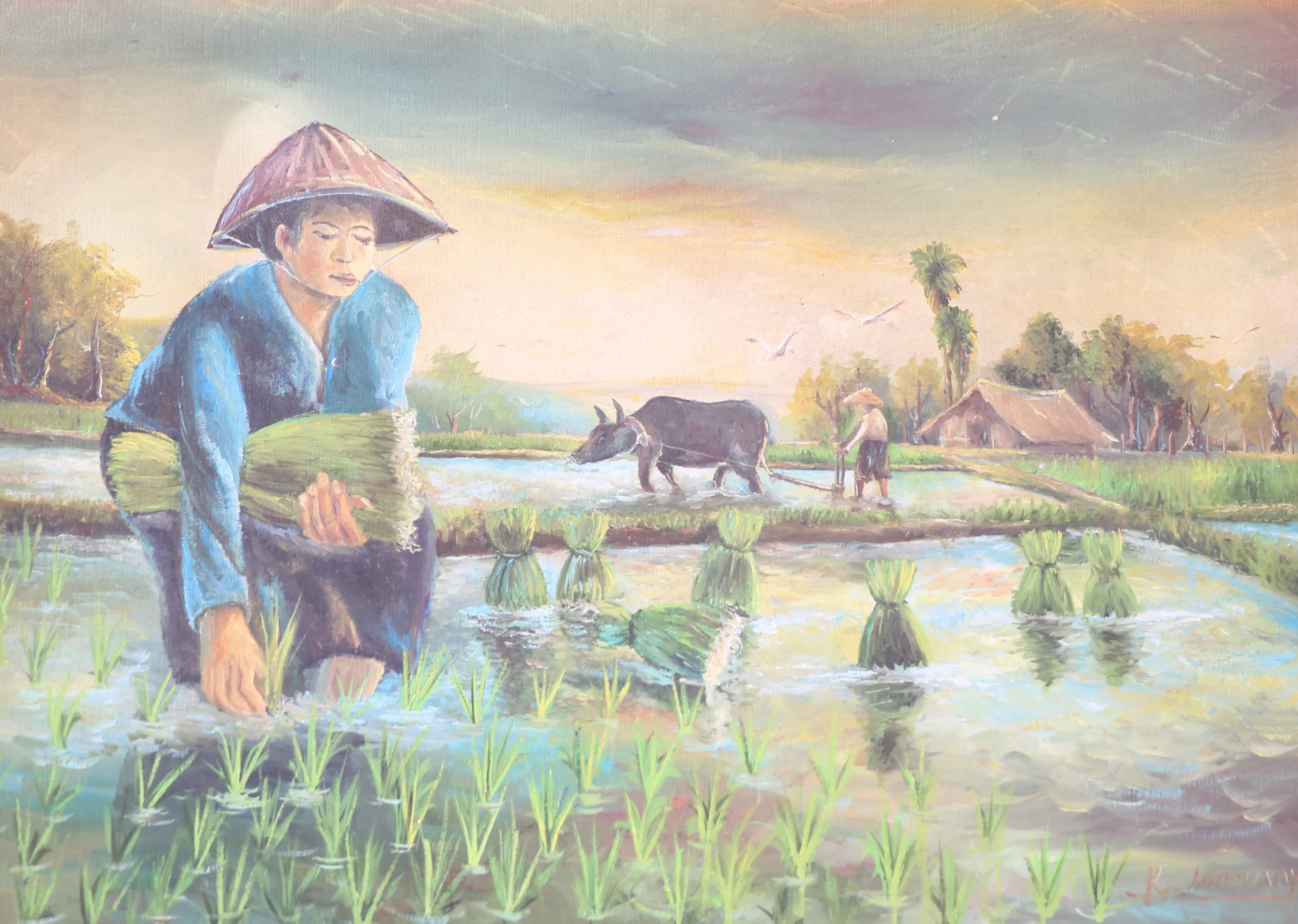colonization
Creation of French Laos
French colonialism played a significant role in Laos’ modern history. Besides exploiting tributary customs for infrastructure and a European administrative systems, the French named the country after the dominant ethnic group, the Lao. France believed the land was rich with resources, but the colonists would later learn that the expense was far greater than the financial return.
France had a presence in Vietnam during this time, and in August 1883 the two nations signed a treaty outlining French protection of Vietnam from Chinese forces. This was the basis of France’s claim to land in Laos. They pursued their goals by exploiting the tributary system as understood by the Siamese and Vietnamese.
The Siamese, Stuar-Fox wrote, understood that the Lao entered tributary relations for “practical means of counter-balancing opposing power [centers] in order to maximize local autonomy.” The Vietnamese interpreted this as sharing in the “benefits of imperial order and benevolence,” so tributaries were recorded part of the Vietnamese imperium.
France used this to their advantage pushed west to claim land in Siam. The man at the center of French expansion into Laos was Auguste Pavie, a French diplomat to Luang Prabang.
A faction in the French parliament supported Pavie in making Laos a French country. He gained the trust of Luang Prabang’s ailing king after rescuing him from his burning palace and escaping down a river. White Tai forces ravaged the city in search of their comrades that were taken hostage by a Siamese commander. Saving the king laid the groundwork for French protection of Luang Prabang by 1917.
Pavie was appointed to a higher diplomatic position in Bangkok in February 1892, and he was tasked with negotiating the Siamese out of Laos.
After long negotiations with Siam and Britain, a few surprise attacks and a stand-off where a French ship pointed its canons at the royal palace in Bangkok, Paive got all parties to sign a treaty on Oct. 3, 1893. The British only wanted to secure a buffer between them and France. Siam was declared neutral and independent from Britain and France claimed territories along and east of the Mekong River.
Another treaty with Siam in 1907 finalized Laos’ border in the south, southeast and northeast. The treaties effectively ousted some of the Lao from the country. A minority population was created in Cambodia, and any Lao living west of the Mekong became citizens of Siam overnight.
French Laos
France didn’t fully comprehend what they were getting into with Laos. Colonists believed the country would be easy to exploit because French society and technology was far more advanced. Colonists saw the population as uncivilized and in need of a savior to bring the country into the modern world.
This is seen by France’s treatment of the King of Luang Prabang. “Never did the French permit the King to become even a figure yead symbol of unity for all of Laos,” Stuart-Fox wrote. And it wasn’t until 1946 that France extended the King’s jurisdiction to all of Laos.
France ordered a large public works program for constructing transportation and communication infrastructure around the country. The program was financed by taxes on goods including alcohol, salt and opium, of which the state had monopolies. Large programs were handled on the federal level, while education, health and justice were under local jurisdiction.
One thing the French made a priority was ending slavery in Laos. Ironically, the colonists replaced one type of oppression with another.
Remote outposts were run by local populations but were headed by French officials. They largely staffed Vietnamese personnel, creating an “ethnic hierarchy” that directed “resentment over corruption, extortion … and taxation … on the next higher level, rather than on the French,” according to Stuart-Fox.
This arrangement created ethnic hostilities that carried through the country’s post-colonial era.
France also furthered Laos’ class division through a head tax paid in cash — a flat tax imposed on an individual. The Lao Lum (Lao of the valley) paid more, but the Lao Thoeng (Lao of the mountain slopes) and Lao Sung (Lao of the mountain tops) were expected to perform more conscripted, but temporary, labor.
According to Stuart-Fox the new monetary system with its taxes “strengthen[ed] and centralize[d] administrative control and … forced a change from a predominantly barter economy to one based increasingly on money as a means of exchange.”
Despite this, according to Stuart-Fox, “no impoverished landless rural proletariat developed” because the Lao Lum peasantry could just grow more rice while the Lao Sung and Lao Thoeng sold opium or forest products.
However, the new system was widely unpopular. There was extensive unrest brought on by disruption of the traditional power structures and trade relations — by colonists exploiting local customs for conscripted labor and imposing burdensome taxes. By 1920, colonists quelled most of the unrest and suppressed revolts around the country, but peace was short.

![Market in Luang Prabang, circa 1900 (by Gervais-Courtellemont, Jules (1863-1931) [Public domain or Public domain], via Wikimedia Commons)](https://images.squarespace-cdn.com/content/v1/58f46ad917bffc955a950af2/1493879253622-KBV2XZ9VCS64GO0BJ9YI/market-in-luang-prabang-1900)
![Local Lao in the French colonial guard, circa 1900 (By Gervais-Courtellemont, Jules (1863-1931) [Public domain or Public domain], via Wikimedia Commons)](https://images.squarespace-cdn.com/content/v1/58f46ad917bffc955a950af2/1493879684655-LX09IKZJ6MEIDBP1MXOL/local-lao-in-french-colonial-guard)